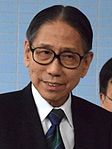| |||||||||||||||||||||||||||||||||||||||||||||||||||||||||||||||||||||||||||||||||||||||||||||||||||||||||||||||||||||||||||||||||
All Elected Constituencies 274 (of the 441) seats in all 18 Districts Boards | |||||||||||||||||||||||||||||||||||||||||||||||||||||||||||||||||||||||||||||||||||||||||||||||||||||||||||||||||||||||||||||||||
|---|---|---|---|---|---|---|---|---|---|---|---|---|---|---|---|---|---|---|---|---|---|---|---|---|---|---|---|---|---|---|---|---|---|---|---|---|---|---|---|---|---|---|---|---|---|---|---|---|---|---|---|---|---|---|---|---|---|---|---|---|---|---|---|---|---|---|---|---|---|---|---|---|---|---|---|---|---|---|---|---|---|---|---|---|---|---|---|---|---|---|---|---|---|---|---|---|---|---|---|---|---|---|---|---|---|---|---|---|---|---|---|---|---|---|---|---|---|---|---|---|---|---|---|---|---|---|---|---|---|
| Registered | 1,840,413 | ||||||||||||||||||||||||||||||||||||||||||||||||||||||||||||||||||||||||||||||||||||||||||||||||||||||||||||||||||||||||||||||||
| Turnout | 423,923 (32.47%) | ||||||||||||||||||||||||||||||||||||||||||||||||||||||||||||||||||||||||||||||||||||||||||||||||||||||||||||||||||||||||||||||||
| |||||||||||||||||||||||||||||||||||||||||||||||||||||||||||||||||||||||||||||||||||||||||||||||||||||||||||||||||||||||||||||||||
The 1991 Hong Kong District Board elections were held on 3 March 1991. Elections were held in all 19 districts of Hong Kong for 274 members from directly elected constituencies, which counted for about two-thirds of the seats in the District Boards.
It was the first of the three-tier elections in 1991, followed by the May Urban and Regional Council elections and the September Legislative Council election in which direct elections would be introduced for the first time. In preparation for these elections, both the liberal pro-democracy and conservative pro-business forces formed political parties to the contest in the coming elections.[1] The pro-democracy party United Democrats of Hong Kong (UDHK) formed as a grand alliance for the pro-democrats in April 1990, the more middle-class oriented Hong Kong Democratic Foundation (HKDF) formed in October 1989 and the pro-business conservative Liberal Democratic Federation of Hong Kong (LDF) formed in November 1990.
About 420,000 voters cast their votes, which counted for 32.5 per cent of the total electorate, higher than the 30.3 per cent of the previous 1988 elections but lower than the 38.9 per cent in the first District Board elections in 1982. 81 incumbents were elected without contest. 70 pre cent of the candidates were affiliated with political groups and public organisations. The newly established liberal United Democrats emerged as the biggest winner in the election, winning 56 seats out of 80 candidates which won evenly in each region. The conservative Liberal Democratic Federation claimed to have won 50 seats out of 89 candidates, although many of them ran as independents of whom only 35 openly acknowledged their LDF affiliation.[2] Three of the seven candidates from the Democratic Foundation got elected, while the other pro-democracy groups, the Meeting Point won 11 out of 13 bids and the Association for Democracy and People's Livelihood (ADPL) got 14 out of 17 candidates elected.[3]
Out of 30 pro-Beijing candidates who contested in the election, 24 of whom were elected, including each five candidates in Eastern District and Kwun Tong, eight candidates and eight other Beijing-friendly candidates in Kowloon Central. The pro-Beijing Hong Kong Federation of Trade Unions also fielded 16 candidates, of whom 12 were elected, despite most of them ran under their local affiliations and only three of them ran openly with FTU endorsement. The satisfying results encouraged the pro-China camp to field their own candidates in the coming Urban Council and Legislative Council elections.[4]
After the elections, Governor David Wilson appointed 140 members to the District Boards.
- ^ Yu, George T. (1993). China in Transition: Economic, Political, and Social Developments. University Press of America. p. 233.
- ^ Yu, George T. (1993). China in Transition: Economic, Political, and Social Developments. University Press of America. p. 233.
- ^ "區域性選擧各國選民較冷淡 投票率百分三十二 曹廣榮稱冠於世界 星期日投票政治團體參與 投票率提高 商業界候選人當選 成績傑出". 華僑日報. 5 March 1991. p. 3.
- ^ "親中派角逐區議會卅人參選奪廿四席 勝出率達八成較上屆尤高 工聯會部署邁進立局市局". 華僑日報. 5 March 1991. p. 6.




